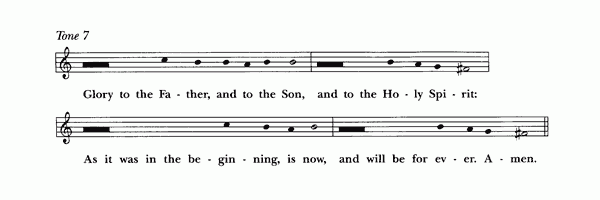Request for solid rectangular note head
I do a lot of church music in an Anglican church. The Episcopal church uses a kind of long, black, rectangular note to indicate that all the words beneath it should be sung on that note. They look like this:

It doesn't really matter what note value is given to these bars, probably they would be the equivilant of a whole note (breve).
Comments
If you click a note then bring up the Symbols palette (press Z), then search for "notehead". you'll see more noteheads you can apply as a symbol by double clicking. The "maxima" seems to be maybe what you want? I guess we don't support ntoe values that long internally, but conceivably could.
In reply to If you click a note then by Marc Sabatella
Yeah, I have used other noteheads and it is readable that way. I was just thinking that, since the long, rectangular note is standard in a chant, it might be something that could be added as an alternative notehead without too much trouble. The playback is not that important in this sort of case. You can't really playback chanted words effectively, anyway.
In reply to Yeah, I have used other by Jake Sterling
Did you check out the symbol I mentioned? Is it not exactly the right one?
In reply to Did you check out the symbol by Marc Sabatella
I did look for the brevis notehead, but I couldn't find it. Here is a screenshot of the Master Palette, Notehead window (Macintosh):
The second to last one (alt. brevis) Is the one I had already been using. Is that the one you were talking about?
Is there a way to add other noteheads?
By the way, thanks again for all your valuable input, Marc. You do a great job!
In reply to I did look for the brevis by Jake Sterling
Actually, the specific "maxima" notehead can only be found on the Symbols section of the Master Palette (press [Z] to show it). If you're using MuseScore 2.0.2, there should be a search box that enables you to filter for it:
![notehead.png notehead.png]()
In reply to Actually, the specific by Isaac Weiss
And if you read up on "Custom palette" in the Handbook, you can see how to add this symbol to your own palette so you don't need to access it from the master palette all the time.
In reply to Yeah, I have used other by Jake Sterling
@Jake Sterling
Typically in transcriptions of chant into modern notation it is the practice to use the Breve to indicate a reciting note.
Most of the time I write one note per word as it avoids confusion, but occasionally I do use a reciting note as in this....
https://musescore.com/churchorganist/scores/76795
This makes a clear distinction between the white reciting note and the black assigned notes, and fits better with traditional chant practice....
![Tone2.PNG Tone2.PNG]()
In reply to Typically in transcriptions by ChurchOrganist
Yes, I also use a breve in place of the long rectangular notehead. Actually, I use the retangular double breve, because it looks less like a normal note and so it alerts the singer that this one has a different meaning than a normal breve.
![Nunc_Dimittis-sample.png Nunc_Dimittis-sample.png]()
But I would like to be able to match the style that is used in my church (and most Anglican/Episcopalian churches in the USA), as well as in The Plainsong Psalter ( http://www.richardliantonio.com/anglican/The%20Plainsong%20Psalter.pdf ). And, since it seems to me that this would only be a matter of adding a new note head style, I think it would be a good addition to MuseScore. It is pretty clear from other comments that most people who want to write out chant and plainsong and finding MuseScore a bit frustrating.
In reply to Yes, I also use a breve in by Jake Sterling
MuseScore 2 has much better chant support than MuseScore 1 did.
The split and join measures facility enables you to put together an unmetrical melody without having to continually resort to counting beats and entering them into the actual time signature for each bar.
There is still work to do - I would like to see support for the neumic notation found in traditional chant books.
But once you have grasped the principles, I think you will find MuseScore easier than most other score engraving applications.
Please let us know of any problems you come across - I work with chant in MuseScore on a regular basis, and have worked out how to deal with most of the problems involved - as an example the notehead used for the reciting note in my example above isn't the same as the actual note which is actually a semibreve. SO in this way you can manipulate the way the score looks from the way it actually plays back.